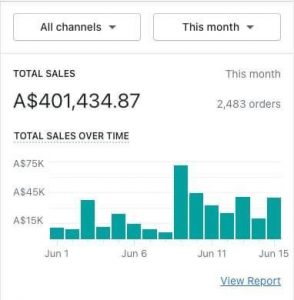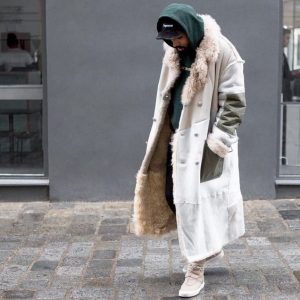TikTok. The most downloaded and highest grossing non-game app globally in the first half of 2021, hitting just shy of 383 million first-time installs and an estimated $919.2 million in spending via the platform.
Users tripled between Q1 2020 and Q2 2021.
Additionally, as Apple’s opt-out rates continue to climb in light of ios14 changes, the success and reliability on Facebook’s ads management platform, continues to decline.
As an agency, brand wide we are executing an omnipresent strategy when it comes to maximising budget output for our brands, and the key tool for us right now driving the highest impact?
TikTok Ads.
The opportunity is ripe when it comes to just how early the new the platform really is. Compared to Facebook being the ‘go-to’ for advertising within e-commerce over the past 5+ years, a platform that launched way back in 2004, TikTok only came on the scene in 2017.
Just like Facebook when it first came out, and just as much when something new comes about, it is always filled with doubt, uncertainty, and the usual ‘does it fit my demographic’ questions..
If we have understood anything from working in this space almost all of our adult lives, it’s that the early adopters, win.
& those that don’t act, always do… eventually.
AFTER the opportunities have already been seized, and then they are just playing catch up and trying to stay competitive.

How did the fashion labels that are entirely e-commerce only, that boast millions of followers, crazy high engagement rates and legions of fans..
The brands that were set up in a bedroom with nothing more than a dream, a supplier and a wi-fi connection that are now worth $100M+ get to where they are?
They simply got in when no one else was, and took an opportunity to have first mover advantage.
Our guess is, you didn’t have an Instagram page for your brand in 2010 when Instagram first came on the scene?
Well, imagine if you did…
Building a Shopify store and running Facebook ads to it with stunning creatives was the advice to take for mass scale 6 years ago. This still works today, however the brands who did this back then had first mover advantage.
Brands such as MVMT who got in early, made strides ahead of anyone else and took the bull by the horns, created a brand which had a $100Million exit.

Their watches are now very commonly replicated, and ‘InstaBrands’ have saturated their market.
Arguably, if they started again today they couldn’t replicate their success.
Timing was everything.
TikTok now presents that opportunity to brands once again, and it’s one that doesn’t come around often. The chance to strike fast, act early, test, learn & grab market share before your competition even consider setting up a TikTok page.
Getting ahead of TikTok’s opportunity is what brands like MVMT saw in the early Instagram days. If you can make viral, authentic, native TikTok content on the platform, and execute this correctly with the right back end advertising set up, your brand can win big.
100k+ audiences can be achieved within weeks, and store sales can rocket like BFCM on steroids.
From our research, (this was shocking to discover) we have found a plethora of household beauty and fashion names that are dominant on almost every other platform, without a TikTok account!
In our eyes, this just shows how early we are..
..& how early you can be.
Conversely, high AOV luxury power players are adopting it. Such names like Louis Vuitton & Gucci have amassed a large following, and have been running paid ads to great effect.
Additionally, we have seen companies such as Qatar Airways and even Aston Martin running ads on the platform.
Still yet to see the opportunity?
TikTok outlined three new e-Commerce integrations that are coming to the app:
– A tool that lets the most popular users share links to products and automatically earn commission on any sales
-The feature for brands to showcase catalogs of their products on the platform
-“Livestreamed” shopping, a mobile phone version of television shopping channels, where users can buy goods with a few taps after seeing them showcased by TikTok stars.
Essentially with the Livestreamed shopping, the T.V. shopping channel will soon be a thing of the past and be an obsolete business model, as TikTok is democratising it.
You now have the ability to have your own e-commerce shopping channel, but interactive AF!
Look Fantastic ran an interactive e-commerce LIVE just last week, and it popped off…

The Chinese version of TikTok, Douyin already generates the majority of its income from in-app commerce, as opposed to branded ads. So, as TikTok heavily invests in the shopping space, soon you’ll be able to click from your favourite brand, directly to checkout.
What’s the strategy?
When it comes to TikTok ads, the front end just like any other advertising platform, is just as important as the back end ads strategy.
The success of TikTok resides in how inclusive it is as a platform. It’s a positive platform, a happy place for creators and scrollers.
While many brands opt to get a ‘polished’ look and feel to their brand through their Instagram feeds, Facebook creatives and often editorial aesthetic, where everything has to be ‘just perfect’, TikTok is a pattern interrupt to this trend.
Brands now have to rethink what is considered to be ‘on brand’, as TikTok completely flips the dynamic you may have had in mind, on it’s head.
TikTok is where your consumers are there to interact with you on a more personal level. If you keep this in mind when thinking up your creative strategy, you’ll win.
TikTok themselves have released the statement:
“Don’t Make Ads. Make TikTok’s.”
This is a fundamental rule to keep in mind. If you are running the same creatives that have worked for your brand on other platforms and are expecting them to convert in the same way, you will likely run budget to the ground.
A user is on TikTok for a reason, and therefore your ad, needs to be inclusive of this reason; they want to feel inspired, find a ‘life hack’, or be taught something new in a short 10-15 second clip.
When crafting your creative, it’s paramount you understand how TikTok works, and how content on there goes viral, before you start.
Our advice is to create content which is as native as possible to the For You Page, aka the ‘FYP!’, add a trending track or VoiceOver, and get creative with it.
Generate content which will endear your audience, make them bond with you, or give them an ‘ah-ha!’ moment of realization that they need your product in their life.
Prepare to disrupt any previous thoughts you had about advertising, and how your brand will integrate with this platform, TikTok is very different to anything else.
…If you want it to work, that is.

What Are The Ad Types?
Brand Takeover
An ad is shown on the app launch screen. Prior to landing on your “For You” pages and starting your daily scroll, you’ll be greeted with a short and sweet ad. These will either be a 3-second static image or a 3-5 second video without audio. Given the format, these ads are best suited for awareness campaigns but advertisers should expect to pay premium prices for this spot especially since TikTok will only show one Brand Takeover Ad to a user each day.
TopView ads
These are the easiest way to think about TopView ads is just as a slightly delayed Brand Takeover Ad. They are 60-second videos designed to target your audience in the most effective way possible. These placements are guaranteed to be the first thing your user sees and will most likely interact with.
In-Feed ads
Similar to ads you’re familiar with on Facebook or Instagram, but they’re a part of your daily “For You” feed. The ads that most will run as a core element of their strategy, this ad format can run up to 60 seconds of video with sound and blends seamlessly into your scrolling and exploring. The ones we see the best conversion rates with, and allow us to retarget your audiences nicely.
Overall, on a TikTok advertising level we have been piloting TikTok ads since the turn of the year, and since then have had a wide range of brands do incredibly well. Seeing massively low CPM’s, high CTR’s and handsome ROI.
Our strategy in light of ios14 has very much been an omnipresent and budget maximisation strategy to ensure budget goes as far as it can for our brands, and that we move proactively for the highest returns and sustained scale possible for our partnerships. With this being said, TikTok is leading the way with where we allocate the bulk of that budget, being as much as 70% in some cases.
Our typical structure looks something a little like this:

On a brand level, it’s very clear that for any brand regardless of industry, the opportunity is a colossal one when it comes to TikTok, you just have to nail the strategy, and get moving before it passes you by.
We mentioned in the title of this blog post that TikTok is the number 1 opportunity of the year.
However, on reflection..
This could well be the opportunity of a decade.




















